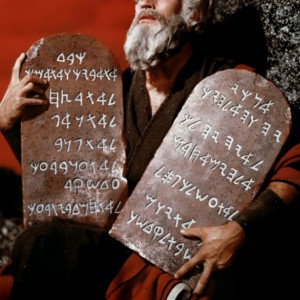Guest Speaker Ron Thomas
3 And while he was at Bethany in the house of Simon the leper, as he was reclining at table, a woman came with an alabaster flask of ointment of pure nard, very costly, and she broke the flask and poured it over his head.4 There were some who said to themselves indignantly, “Why was the ointment wasted like that? 5 For this ointment could have been sold for more than three hundred denarii and given to the poor.” And they scolded her. 6 But Jesus said, “Leave her alone. Why do you trouble her? She has done a beautiful thing to me. 7 For you always have the poor with you, and whenever you want, you can do good for them. But you will not always have me. 8 She has done what she could; she has anointed my body beforehand for burial. 9 And truly, I say to you, wherever the gospel is proclaimed in the whole world, what she has done will be told in memory of her.” (ESV)
The parallel passages in John 12:1-8 and Matthew 26:6-13 provide some additional details to this narrative:
- This was six days before the Passover.
- Lazarus and Martha were there, and their sister Mary is the one who anointed Jesus.
- She didn’t just anoint His head, but also His feet, which she then wiped with her hair.
- Judas was the one who scolded Mary for wasting resources, not out of concern for the poor but because he wanted to have access to the money himself.
This took place shortly after Lazarus had been raised from the dead, which was one of the things that instigated the Jews to want Jesus dead (John 11:53). Lazarus himself may have also been in danger.
In just a few days Jesus would be tried and convicted. He knew what was coming and He spoke openly of His death with His disciples, but they kept denying or ignoring the impending events. It seems that perhaps Mary was one of the few who heard and understood, and she was moved to anoint Jesus with an expensive ointment worth about a year’s wages. She may have realized that this could be her last chance to demonstrate her love for Jesus.
While the disciples (and specifically Judas) looked on and judged Mary’s behavior as reckless, inappropriate, and wasteful, Jesus made two clear statements honoring Mary:
“She has done a beautiful thing to Me.”
“She has done what she could.”
All He asks is that we love Him and demonstrate it by loving one another. In Matthew 25:34-40 Jesus reminds us that “as you did it to one of the least of these my brothers, you did it to Me.” Love that is shown for those in need is love shown for Christ.
Mary’s focus was on Christ in worship. She had no concern for what anyone else thought or said. Romans 12:1 says we are “to present your bodies as a living sacrifice, holy and acceptable to God, which is your spiritual worship.” Mary did all that she could to worship Christ by her actions. It is the size of the heart that matters, not the size of the gift (Mark 12:42-44). And whatever is done for Jesus will be noticed and remembered by Him (Hebrews 6:10).
We may feel inadequate and lacking in resources, but God knows when we “do what we can” in love and service for Him.
Discussion Starters:
1) Can you picture yourself doing what Mary did or does that seem overly risky and wasteful? Do you identify more with the disciples in the room?
2) Have there been times you have felt led to do or say something and have not followed through? Or times you did act and were blessed for having done so?
3) Do we tend to judge those who worship differently than us? Are there things we can do to stay focused on Christ and not on public opinion—in church services or life in general?
4) What can we do to remember that “It’s Still Easter” in daily celebration of the resurrection and all that it means for us?
Sermon audio:







